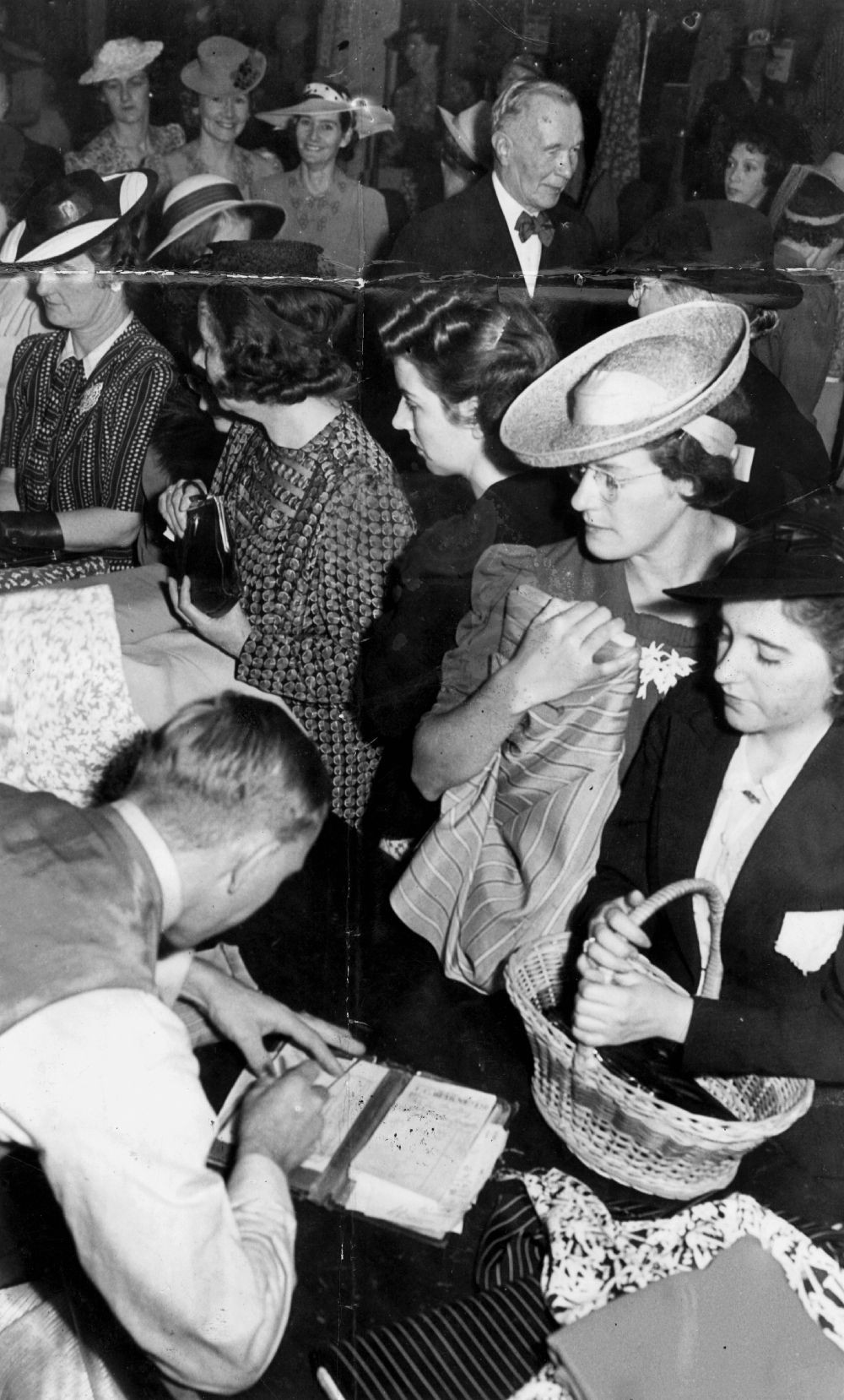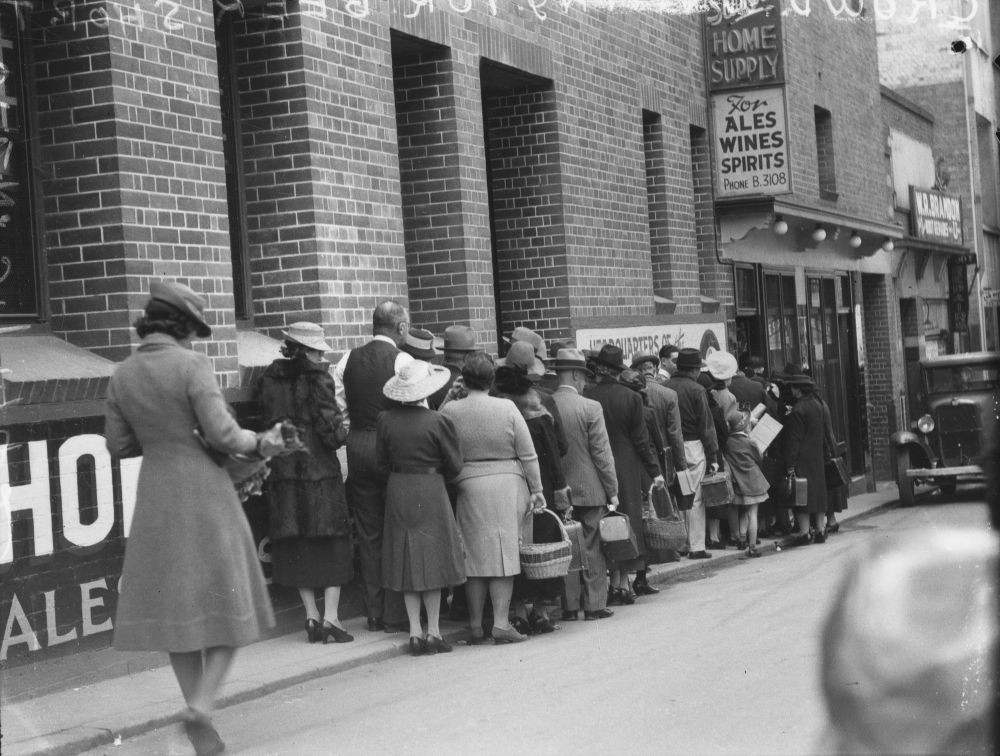Soaps, corsets, linen, beer and toilet paper: Panic buying in Australia
By Staff anne Reddacliff | 16 March 2020
Shortages of products can induce consumers to “stock up” in the hope that they are not faced with a deprivation by having to go without that product in their households. Most panic buying in Australia has been caused by war time rationing. However, there are some instances where the product that is sought bears little relationship to the perceived threat. The psychology of consumer behaviour is widely documented in journals and published books relevant to marketing.
Panic buying behaviour can actually cause the event that is feared – a shortage is created by the fact that rumours abound about a possible freedom-threatening event. Described in the literature as a reactance, the buying behaviour spreads as rapidly as a virus.
In December 1947, Brisbane women rushed to the stores one Monday morning in the belief that corsets would no longer be available. The women were described as “frightened”. Sales of corsets were discontinued during the lunch break. The reason for the fear was that corset making in Australia would probably not continue after the following year. Why did this translate into an 8am panic when the event was more than a year away is perplexing.
Panic buying of corsets, Townsville Daily Bulletin, 16 December 1947, retrieved from Trove on 13/03/2020
In January of that year, panic buying had been applied to soap. Despite pleas from the President of the Queensland Grocers, soap “flew off the shelves.” The soap onslaught was fuelled by shortages in Victoria and New South Wales. At the end of the war, when rationing had been severe, some of this fear is understandable.
However, by September 1950, some five years on from the end of the war, another panic buying attack affected drapery. Bed linen and household linen was depleted entirely in just a few short weeks despite pleas by officials and government ministers. The rumour was strong that rationing would be reintroduced and that “ration books were being printed”. Yet the Deputy Prime Minister Fadden said that the government had no plans to ration cotton goods. Not only was stock purchased, but shoppers also used the layby system to put more items away for future purchase. This led to a suspension in the layby system in some stores.
In the post war era, tyres and fuel were also the products sought by panic buyers. The closure of the Goodyear Tyre Factory in Sydney as a result of strikes caused a tyre buying frenzy in Brisbane in July 1951.

Shoppers purchasing rationed items at T.C.Beirne’s store in Fortitude Valley in World War Two, State Library of Queensland, John Oxley Library, Negative number: 112044
Earlier in the century, there was a shortage of sugar in 1920 which was a result of adverse seasonal conditions. The Brisbane Courier admitted there was a shortage but implored shoppers not to panic as that would ‘lead to evils which at present do not actually exist.” Would housewives observe reasonable economy, as they were begged to do?
In each case, politicians and industry officials have reminded shoppers that if they just bought what they needed, the shortage would either not exist or be less severe. In each case, these requests for calm have fallen on deaf ears as shoppers became increasingly more manic……until the product was unavailable entirely which seemed to quell the panic. The study of the psychology of consumer behaviour has been a source of fascination for the entire 20th century. Why do shoppers act on rumours that may have no basis or relevance?

Shoppers in Burnett Lane, Brisbane, Queensland, 1942, State Library of Queensland, John Oxley Library, Negative number: 104137. During World War II beer and wine were rationed and long queues formed as consumers feared they would miss out.
In the current scenario, the toilet paper rush is unique in panic buying examples as there is no link to the virus in question (that virus is not known to have a symptom that requires excess toilet paper) and the product is actually manufactured in Australia, not China. The product is not related to strikes in industry, war time rationing or the lack of a natural resource. There is obviously an element of comfort for shoppers in buying this basic commodity. Perhaps the panic buying of toilet paper is a symbol of an affluent society where toilet paper is considered more important than food stocks.
State Library of Queensland has a wide range of resources on the psychology of consumer behaviour. Major databases such as Proquest Central, available for free via your State Library membership provide a wealth of articles on the twentieth century dilemma of trying to understand consumer behaviour.
Christina Ealing-Godbold
Research Librarian
Information Services
State Library of Queensland.
More information
Membership -
/get-involved/become-member
Databases -
/research-collections/information-collections/eresources/databases
Ask Us -
/plan-my-visit/services/ask-us
Trove -
Resources
Consumer behaviour in action / Peter Ling, Steven D'Alessandro, Hume Winzar.
Peter Ling ; Steven D'Alessandro author. ; Hume Winzar author. ; South Melbourne, Victoria : Oxford University Press ; 2015
Consumer Behaviour in Action introduces students to the fundamental concepts of consumer behaviour in a contemporary context. The text provides a balanced approach as it illustrates theory with practical applications...
Available:State Library South Bank Collection Open Access, level 2 (658.8342 2015
Book
The new consumer psychology : scanning buying behavior with MRI of the mind / Sang Min (Leo) Whang.
Sang-Min Whang ; London ; New York : Routledge, Taylor & Francis Group ; 2016
The term "consumption" is generally thought of as process by which individuals purchase goods and services. The New Consumer Psychology attempts to explain consumption as a social behaviour that...
Available:State Library South Bank Collection Open Access, level 2 (658.8342 2016 ).
ebook
Decoding the New Consumer Mind How and Why We Shop and Buy
Kit. Yarrow ; Hoboken : Wiley ; 2014
A decade of swift and stunning change has profoundly affected the psychology of how, when, and why we shop and buy. In Decoding the New Consumer Mind, award-winning consumer...
Online acc
Proquest Central Database
The Impacts on Health, Society, and Economy of SARS and H7N9 Outbreaks in China: A Case Comparison Study
Qiu, Wuqi; Chu, Cordia; Mao, Ayan; Wu, Jing. Journal of Environmental and Public Health; New York Vol. 2018, (2018). DOI:10.1155/2018/2710185
The U.S. bank panic of 1907 and the Mexican depression of 1908-1909
Cahill, Kevin J. Historian; Allentown Vol. 60, Iss. 4, (Summer 1998): 795-811.
How Choice Fueled Panic: Philadelphians, Consumption, and the Panic of 1837
Enterprise & Society; Wilmington Vol. 12, Iss. 4, (Dec 2011): 761-789. DOI:10.1017/S1467222700010673
-----------------------------------------------------------
Comments
Your email address will not be published.
We welcome relevant, respectful comments.